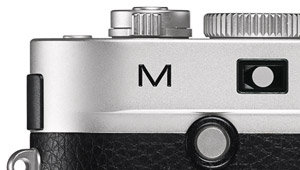Good things take time! Further and higher quality Leica M Typ 240 full resolution DNG and JPEG sample images are safely stored on a hard drive, but I’m not yet able to publish them. Appreciate your understanding. Rest assured, things are looking good — and meanwhile Jono Slack publishes the first official sample gallery! Enjoy. Also, having seen real world samples shot with the new 50mm F2 APO Summicron, I have to politely smile at earlier reports that the Zeiss equivalent might be, optically, in the same league for a lot less money. I’m not talking controlled studio environment. Mounted on the M, the APO’s color and contrast rendition — not to mention the absolute zero distortion — is so spot on that you better think hard when thinking about getting a 50mm. Insane amount of money, I know, but for a reason.

Even dedicated Leica users are slowly giving in who explicitly want to resist the upgrade urge this time. Reasons thereof are manifold. For instance, the new generation M with different sensor architecture won’t give you the color blobs and noise visible you in underexposed M9 image areas. Maybe some luminance, but I guess it’s safe to say that you’ll happily grin when enjoying the upcoming sample images.
Here’s an initial assessment by long-time Leica photographer Jaap Vleeskruijer whom many of you may know from various forums:
My findings are without any scientific testing, so caveats apply:
- Leica is clearly going to great lengths in the color response to retain the “Kodak look” they have in their M8/9 and S2.
- The dynamic range seems to have gained about two stops over the M9 and surpasses the S2.
- The noise matches the D600.
- There is an increase in resolution, which is not very relevant to real-life photography.
- Black-and-white conversions are improved over the M9, yet still look different from the Monochrom, which remains the preferred specialist in this niche.
The RAW converters have not yet implemented M profiles, so it is down to the user to get the best out of the files for the time being. I hope Adobe will not be long before they implement the update. I do not have high hopes of Capture One, as they appear to be even unable to adapt their software to the Monochrom, which has been out since June 2012. The best I managed to get out of them was “we are working on it” two months ago…
I was *no-way!* planning to upgrade from the M9 to the M, as I did not see the need. However, after looking at the files I put down my name with the dealer, specifically because of the gain in dynamic range.
Other readers observe that, looking back, the color reproduction of the M8 still looks better to them than the M9’s, despite the filters. Might be an M9 firmware thing? Doesn’t make the M9 a lesser camera in any way. It’s just the moodier M. Once you get along with it the rewards are enormous. And especially now, with used M9s about to flood the second-hand market, what better time to get one of those classics.
Still, the M240 presents a leapfrog. One might add the difference in resolution is not marginal, but are 24MP really necessary? I’d prefer a CMOSIS 18MP solution. The 24MP will push many optics to the limit, so more than ever it’s necessary to go for the best available glass.
Other benefits: less energy consumption, lower heat and more favorable high ISO output — and color accuracy is actually more a function of the color filter array and digital signal processing.
I would love to see the sensor data sheet for the new CMOSIS detector. It’s a way to differentiate between improvements in the sensor and signal processing improvements. Most manufacturers however keep the data sheet as proprietary, few publish them. Kodak published the data sheet on the M8 sensor, but not the M9 sensor. They did publish data sheets on similar generation sensors. Still, you could figure out how the M9 was improved.
If we could get some data, it would be possible to do comparisons. Specifications such as “well capacity” and “dark current” define saturation, noise and dynamic range in photometry.
I think its more than normal that M users want to see the new M CMOS sensor can catch up or even pass the existing CCD technology. All those new features and advanteges like better high ISO performance mean that we soon have to live without the M9’s low ISO performance.
Let’s be honest, the M9’s low ISO performance isn’t great when compared to most modern cameras. Still, it produces what I would call more “enjoyable” files, even though both in terms of color discrimination and dynamic range the M9 is outclassed by a wide margin by, say, the D800 sensor.
It’s great to see an innovative Leica dedicated to modernize its legacy by making better tools for photographers while at the same time remaining faithful to the heritage.
+++ BTW, you can order the Leica M from Amazon (black/silver), B&H (black/silver) or Adorama (black/silver). First batches should reach dealers in March.


